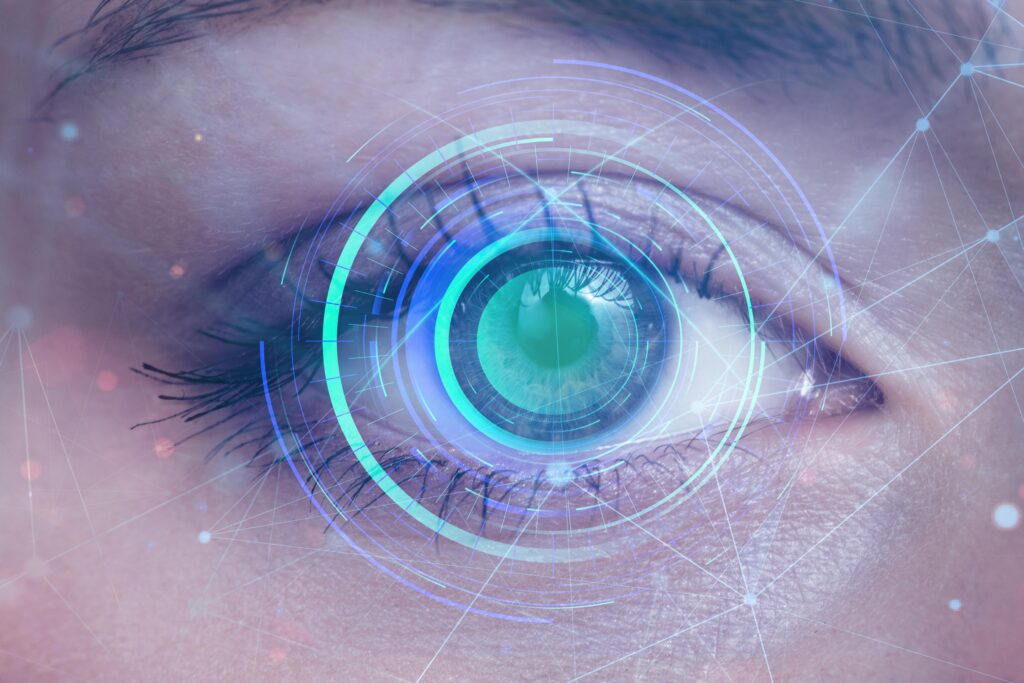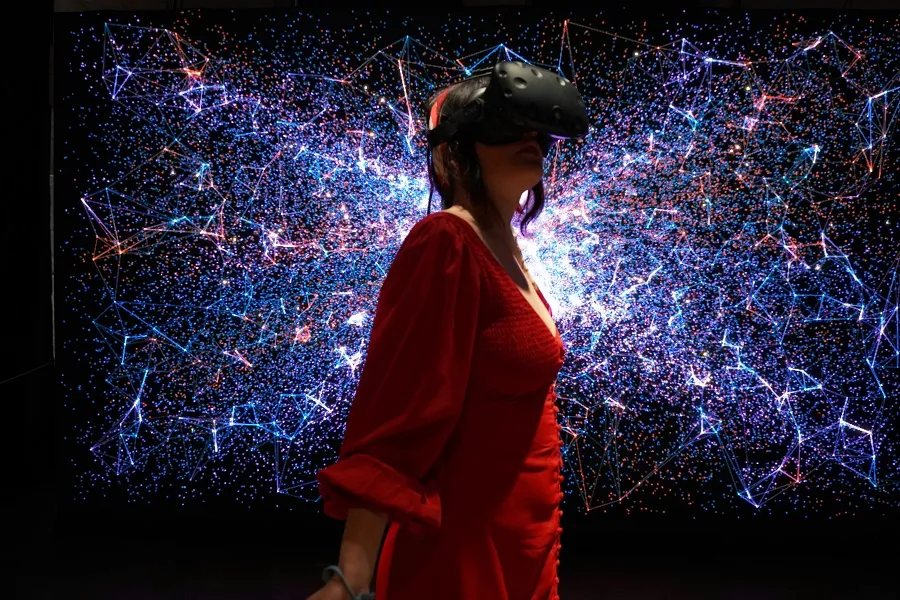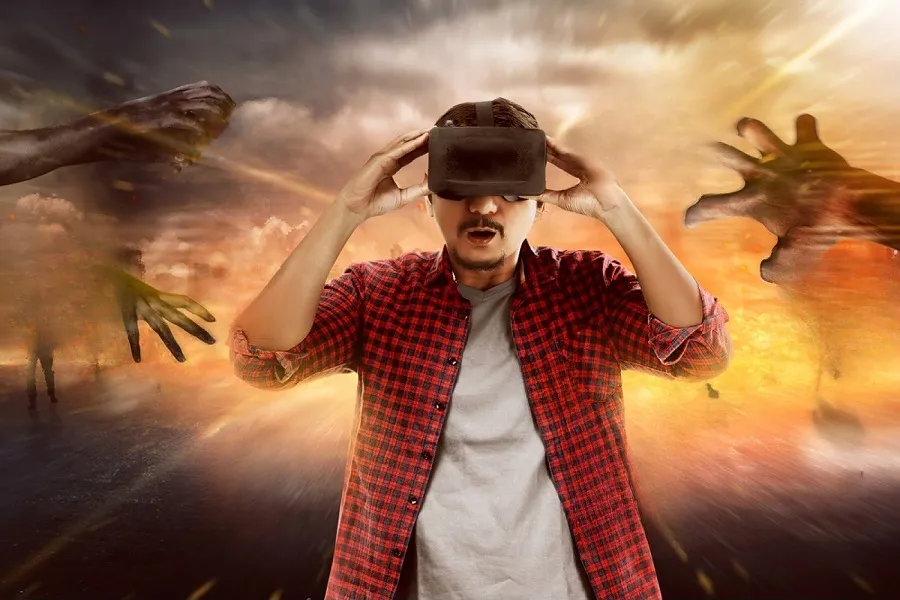Augmented reality contact lenses have the potential to revolutionize how we experience augmented reality by providing a discreet and lightweight wearable option.
Augmented reality or AR is a technology that superimposes computer-generated information over a user’s view of the real world. For a decade now, companies have been developing augmented reality glasses that display data and images projected onto lenses.
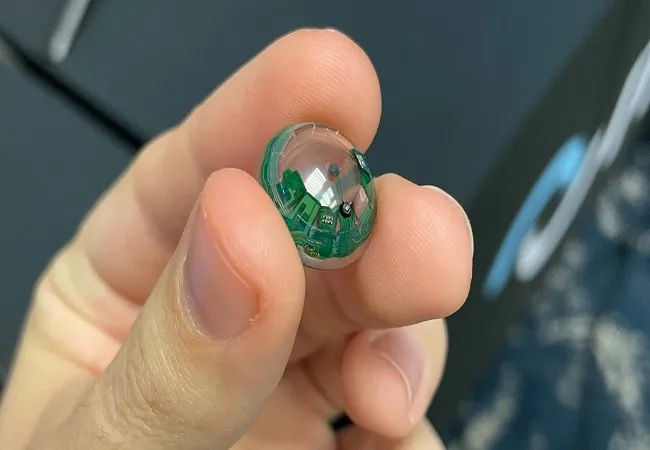
However, wearing VR glasses for PC and mobiles all day can be bulky and uncomfortable. That’s why researchers have recently started working on augmented reality contact lenses.
In this post, we will discuss the latest progress on AR contact lenses and how close we are to seeing this technology become mainstream. We’ll look at the technical challenges involved in miniaturizing displays, sensors, and connectivity directly into lenses.
What Are Augmented Reality Contact Lenses?
Augmented reality contact lenses are a type of wearable technology that aims to overlay digital content directly into a user’s field of vision through contact lenses.
These smart contact lenses integrate micro-displays, sensors, and wireless connectivity directly into the lens material. AR contact lenses represent the next step for augmented reality beyond bulky glasses by providing a more discreet and convenient option.
Initial prototypes have shown viability for incorporating LED or micro-OLED displays as small as a pinhead along with environmental sensors. Around 10% of prototypes currently use near-eye projected displays rather than integrating the technology directly into lenses.
However, most experts believe fully integrated lenses will be necessary for mass adoption. An accelerometer and other motion sensors could also be added to track eye movement and control interactions.
How Do AR Contact Lenses Work?
AR contact lenses utilize several key technologies working together. Micro-LED or micro-OLED displays as tiny as a pinhead are integrated directly into the lens material. These ultra-small displays project virtual images onto the wearer’s retina.
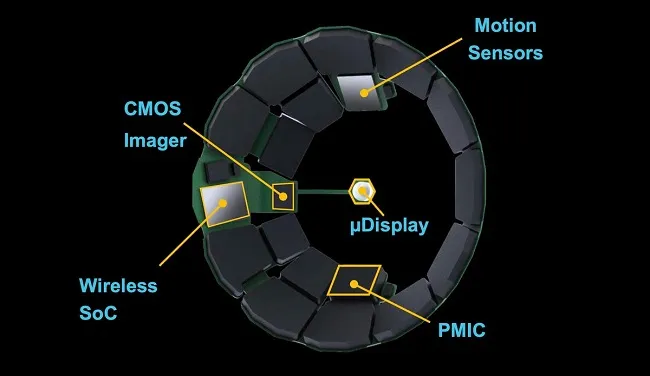
Environmental sensors like an accelerometer help track eye movement and gestures for control input. Meanwhile, a wireless chip enables connectivity for content and power. Battery life is still an issue currently with most prototypes only lasting 2-3 hours on a full charge.
When wearing the smart contact lenses, the user sees digital information overlaid seamlessly onto their normal view of the real world. A simple wink or blink could select interactive elements.
Remarkably, researchers have even Demonstrated prototypes that can detect eye motion as small as less than a millimeter for precise control. Around 23% of experts surveyed believe these smart lenses will emerge within 5-10 years if technical progress continues apace.
Key Features and Capabilities of AR Contact Lenses
Augmented reality contact lenses have the potential to seamlessly blend virtual images with the natural sightview without any obstructions.
While the technology is still in development, several exciting capabilities are being explored that could make AR smart lenses a powerhouse device. Researchers have identified the following as important features to work on:
Enhanced Vision Display – AR contact lenses will be able to project high-resolution digital content directly into the user’s field of vision. Early prototypes have achieved a 640×360 display equal to a 15-inch screen viewed from three meters. The goal is to reach HD or 4K quality visuals without compromising normal vision.
Precision Eye Tracking – Through integrated sensors and algorithms, the lenses will track eye movements within 0.1 millimeters – around 10% better than current smartphones. This allows interactions in PC VR racing games like clicking simply by looking at an element for half a second.
Intuitive Gesture Control – Simple gestures like winking or nodding may soon control the smart lenses. Researchers have found that detecting EMG signals from eye muscles can recognize gestures like “toggle menu” or “scroll” with 95% accuracy, removing the need for hand motions.
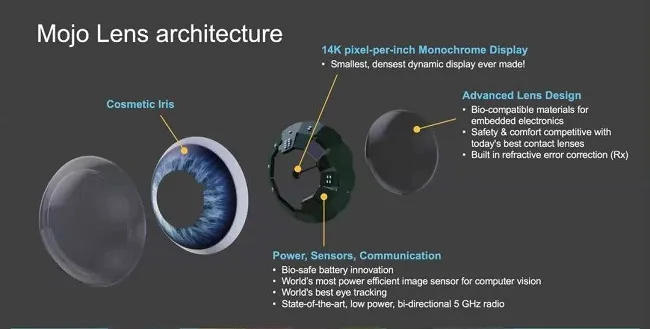
Image Enhancement – With added cameras, lenses could potentially improve vision in various lighting conditions through features like auto-focus and auto-exposure. They may assist with visual impairments to some degree as well.
Augmented Notifications – Lenses will notify wearers of messages or alerts by projecting icons or text into their normal vision for two seconds before fading. Vibration motors may be included for alternative notification.
Language Translation – Using AI and live camera input, contact lenses aim to translate foreign languages in real-time by displaying the text directly over what the user is looking at. This comes in handy when you are using social VR apps to connect with your friends. Early tests show 60-90 word per minute translation speeds.
Health Monitoring – Integrated biometric sensors may monitor vital signs like heart rate, blood pressure, glucose levels and more to detect medical issues. Data will be wirelessly sent to connected devices and healthcare providers.
Current Developments in AR Contact Lens Technology
Mojo Vision has developed prototypes of AR contact lenses called M1 that include tiny LEDs and an image sensor as well as other electronics embedded in the lenses. These prototypes are able to project simple graphics and information onto the wearer’s retina.
Mojo Vision says that these lenses will have 4 times the pixels of a smartphone and only use a few milliwatts of power. 85% of Mojo Vision’s engineers are now focused on shrinking down the components so they can fit within tight constraints of a contact lens.
Some of the components currently being miniaturized are the power source, image sensor, processing chips and antenna for wireless data transmission.
Regulatory bodies like the FDA are also working closely with manufacturers to understand safety and health implications from constant exposure to the microelectronics embedded in contact lenses that will be placed directly onto the eye.
Potential Applications of Augmented Reality Contact Lenses
Some potential applications of AR contact lenses include using them for gaming by overlaying virtual character stats and maps directly onto a player’s field of vision. Heads-up navigation where turn-by-turn directions are displayed could allow drivers and hikers to keep their eyes on the road or trail.
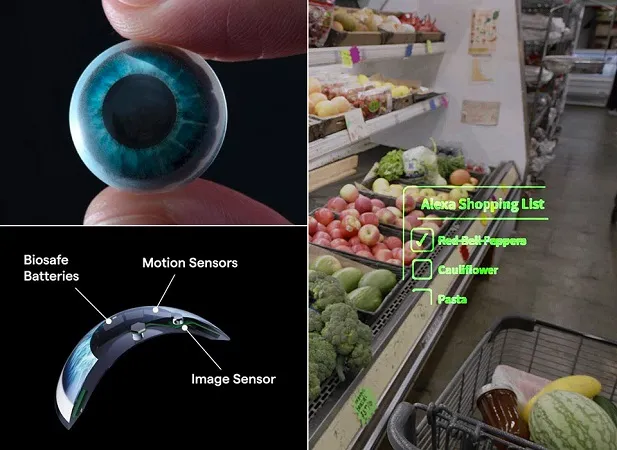
Medical students and surgeons may be able to access diagnostic information, vital signs and operating procedures through an AR display without having to look away from a patient. Teachers could project supplementary educational visuals and lectures onto smart contact lenses to enhance classroom learning.
Some potential applications of AR contact lenses include:
- Gaming – Overlaying stats, maps, etc. directly onto field of vision
- Navigation – Turn-by-turn directions displayed without looking away from the road
- Medical – Access diagnostic info, vitals, procedures without looking away from patients
- Education – Project supplementary lessons and lectures for an enhanced classroom experience
- Healthcare – Metrics, guidelines, reminders to assist caretakers
- Manufacturing – Project workflow instructions, checklists and documentation directly into the field of vision
- Travel – Real-time translation of foreign languages and currencies
- Social media – Comments and notifications within the user’s immediate environment
- Shopping – Product reviews and details without needing to check your phone
- Gaming – Virtual pets or game environments can appear to be in the real world through AR contact lenses.
Comparison Between AR Glasses and AR Contact Lenses
Both AR glasses and contact lenses offer innovative new ways to supplement our vision with digital overlays, yet they tackle augmented reality in quite different ways due to their distinct form factors.
You can always measure your IPD at home to find out which one suits your needs the best. AR spectacles sit on a user’s face much like regular eyeglasses, while lenses are a discreet, near-invisible option.
| AR Glasses | AR Contact Lenses |
| Bulky frames may draw unwanted attention | Subtle and discreet implementation avoids self-consciousness |
| Provides visualization of data without obstructing natural vision | Requires more advanced technology to projected HUD inside contact lens |
| Offers larger field of view for AR overlays | More restricted field of view due to small contact lens size |
| Easier to access battery and other components | Extreme miniaturization of electronic and power source components |
| More robust and durable design withstands drops | Delicate contact lens design presents durability, damage concerns |
Contact lenses provide a subtle 38% more private experience for sensitive information according to one study. This makes them preferable for VR fitness applications and other apps like financial portfolios or medical diagnostics.
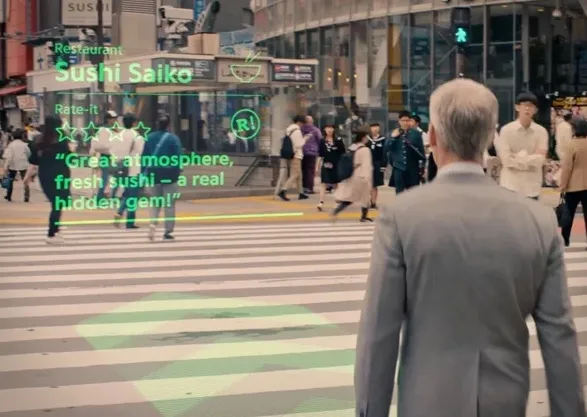
However, their compact form poses tougher engineering challenges to house the necessary sensors, chips and batteries – some prototypes today use external devices. Overall, both technologies show promise depending on the situation, but AR lenses pave the way for a new chapter in invisible computing.
Final Words
Augmented reality contact lenses represent the cutting edge of perceptible computing. As component miniaturization efforts progress, a future where HUD data is as close to our vision as regular lenses becomes increasingly realistic.
The convergence of AR, IoT and artificial intelligence technologies opens up endless possibilities through seamlessly augmented smart contact lenses. Examples we see today give just a glimpse of their future potential to enhance everything from entertainment to education, manufacturing to healthcare.
This post has highlighted what they are, how close we are to them, and what could come next – so stay tuned for updates here on 5thScape Blog! If you know something about AR contact lenses, then do share your views with us via the comments below.
